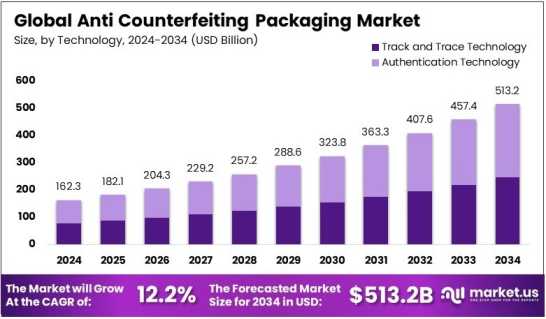Seal of Authenticity: How Packaging Fights Counterfeit Epidemics
1. The Global Counterfeit Crisis
1.1 A Pandemic of Fakes Across Industries
Counterfeiting isn’t a petty crime—it’s a transnational menace infiltrating nearly every sector. From fake cancer medications to imitation car brake pads, the counterfeit epidemic is omnipresent. Its reach has stretched beyond street vendors into global supply chains, e-commerce platforms, and even healthcare systems. No brand is immune. No consumer is entirely safe.
1.2 The Human and Economic Toll of Counterfeit Goods
The ripple effects are staggering. According to global trade watchdogs, counterfeit goods account for over $500 billion in annual losses worldwide. But the cost isn’t just monetary. Counterfeit drugs have led to therapeutic failures and fatalities. Fake automotive parts have caused road accidents. This epidemic corrodes consumer trust, endangers public health, and drains legitimate enterprise. The need for authenticating every product—beginning with its packaging—is not just essential, it’s urgent.
for more inform : https://market.us/report/anti-counterfeit-packaging-market/
2. Packaging as the First Line of Defense
2.1 Beyond Aesthetics: Packaging with Purpose
Gone are the days when packaging was just a shell, a visual garnish. In today’s war against fakes, it’s a battlefield. Packaging now wields intelligence. It encodes messages, bears markers, and deters duplication. It has evolved into a tool of verification, allowing brands to stamp not just their logo, but their credibility, onto each unit.
2.2 Building Trust through Tamper-Evident Solutions
Imagine opening a medicine bottle and discovering the seal broken. That tiny tear speaks volumes—it warns, alerts, and informs. Tamper-evident features like induction seals, shrink bands, and breakable caps act as silent sentinels. They create friction for counterfeiters and confidence for consumers. This subtle transformation turns packaging into a trust-building agent at the shelf level.
3. Technological Armor in Modern Packaging
3.1 Holograms, Microtext, and Invisible Inks
Overt technologies like holographic seals dazzle not just for design, but for defense. They’re difficult to replicate and easy to verify. Microtext—tiny print only visible under magnification—adds a microscopic layer of verification. Invisible inks, revealed only under UV light, add stealth. Each of these techniques combines sophistication with simplicity, confusing counterfeiters while empowering inspectors and even everyday buyers.
3.2 Blockchain, RFID, and Track-and-Trace Innovation
Digital fortification is where the next battle is being fought. Blockchain technology allows for immutable product histories—from factory floor to final purchase. RFID tags and QR codes bridge the physical and digital, enabling consumers to scan a package and trace its origin instantly. These technologies transform packaging from static wrap to dynamic storyteller, revealing truth with every scan.
4. Industry Use Cases: Sectors Leading the Charge
4.1 Pharmaceuticals: Securing Lives with Each Seal
In pharmaceuticals, a mislabeled vial isn’t just a business risk—it’s a matter of life and death. Counterfeit drugs have infiltrated even regulated markets. Packaging has risen to meet the challenge. Blister packs now bear serial codes; vials carry unique barcodes linked to centralized verification systems. Anti-counterfeit packaging here is more than protection—it’s a guardian of life.
4.2 FMCG and Luxury Goods: Preserving Integrity and Prestige
From gourmet chocolates to high-end perfumes, counterfeiters mimic aesthetics with alarming precision. Brands now embed NFC chips inside bottle caps, use color-shifting labels, and design packaging that self-destructs upon tampering. It’s not merely about security—it’s about preserving the aura of luxury and the assurance of quality.
4.3 Electronics and Automotive: Guarding Precision and Performance
A fake phone battery can explode. A counterfeit brake pad can fail catastrophically. These industries demand packaging that authenticates, traces, and educates. Tamper-proof labels, QR-code activation systems, and serialized part packaging ensure only genuine components reach the consumer—maintaining both safety and brand reputation.
for more inform : https://market.us/report/anti-counterfeit-packaging-market/
5. The Road Ahead: From Reactive to Proactive Protection
5.1 Smart Packaging Ecosystems and Data Synergy
The future is not in isolated labels but interconnected ecosystems. Smart packaging will leverage IoT to monitor condition, location, and authenticity in real time. A medicine box could alert users if stored in high heat. A wine bottle could notify retailers if tampered with en route. Such packaging doesn’t just respond to threats—it anticipates them.
5.2 Policy, Collaboration, and the Future of Anti-Counterfeit Strategy
No brand can fight alone. Governments, manufacturers, tech companies, and consumers must unite. Global policies must standardize anti-counterfeit practices. Cross-border data sharing must become seamless. The counterfeit epidemic can only be contained when collaboration becomes the norm, not the exception.
Conclusion
In a world increasingly threatened by imitation, authenticity must be defended with precision and creativity. Packaging, once dismissed as disposable, now holds the power to protect economies, preserve reputations, and even save lives. The seal of authenticity is more than a sticker—it is a promise, a barrier, and a battle cry against deception.
- Hidden Codes, Real Protection: Trends in Anti-Counterfeit Packaging
- The anti-counterfeit packaging market is rapidly evolving as brands seek innovative ways to combat product forgery and secure supply chains. With rising threats in pharmaceuticals, food, and consumer goods, technologies like RFID, holograms, and blockchain are transforming packaging into powerful tools for authentication, traceability, and consumer trust.
- Anti-Counterfeit Packaging Brand Protection
Related posts:
 Nutrition and Wellness Programs in Assisted Living Communities in Oakville
Nutrition and Wellness Programs in Assisted Living Communities in Oakville
 How UAE Fitout Experts Are Elevating Luxury Brand Spaces in 2025
How UAE Fitout Experts Are Elevating Luxury Brand Spaces in 2025
 Sp5der Hoodie: Comfort, Fit, and Real-World Functionality Redefined
Sp5der Hoodie: Comfort, Fit, and Real-World Functionality Redefined
 Boca Raton Auto Insurance: Online Quotes from Leading Providers
Boca Raton Auto Insurance: Online Quotes from Leading Providers
 Learn Indian Stock Market Course at ICFM – The Trusted Institute for Career-Driven Financial Learning
Learn Indian Stock Market Course at ICFM – The Trusted Institute for Career-Driven Financial Learning
 How To Make Your Spray Tan Last Longer: 7 Pro Tips Honey Hue Tans
How To Make Your Spray Tan Last Longer: 7 Pro Tips Honey Hue Tans
 Choosing the Right Tank Size for Your Mosquito Misting System
Choosing the Right Tank Size for Your Mosquito Misting System
 Modern Flexible Office Pods for Stylish, Productive Workspaces
Modern Flexible Office Pods for Stylish, Productive Workspaces







